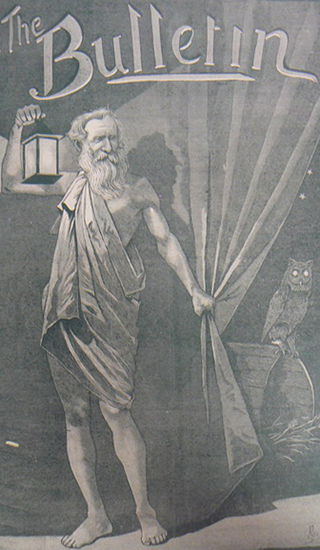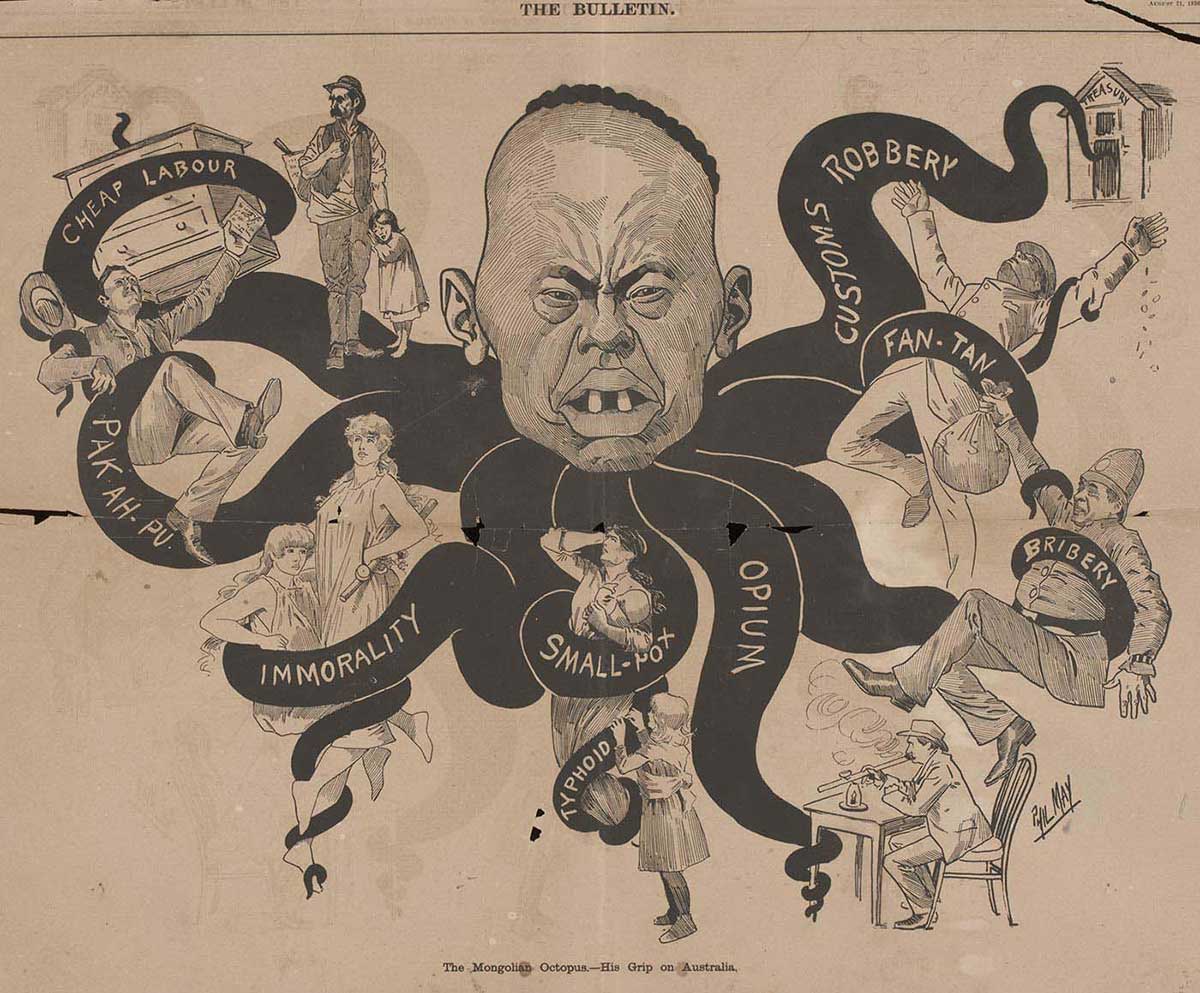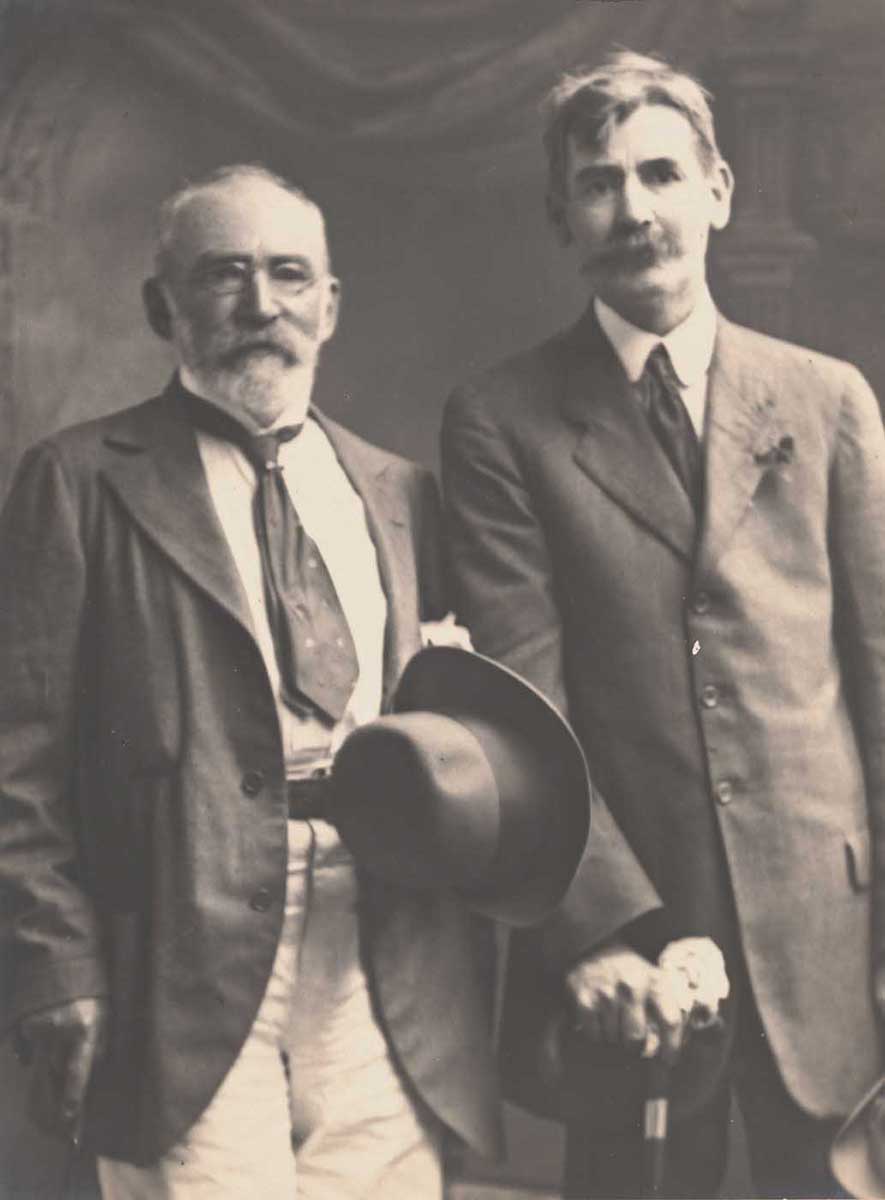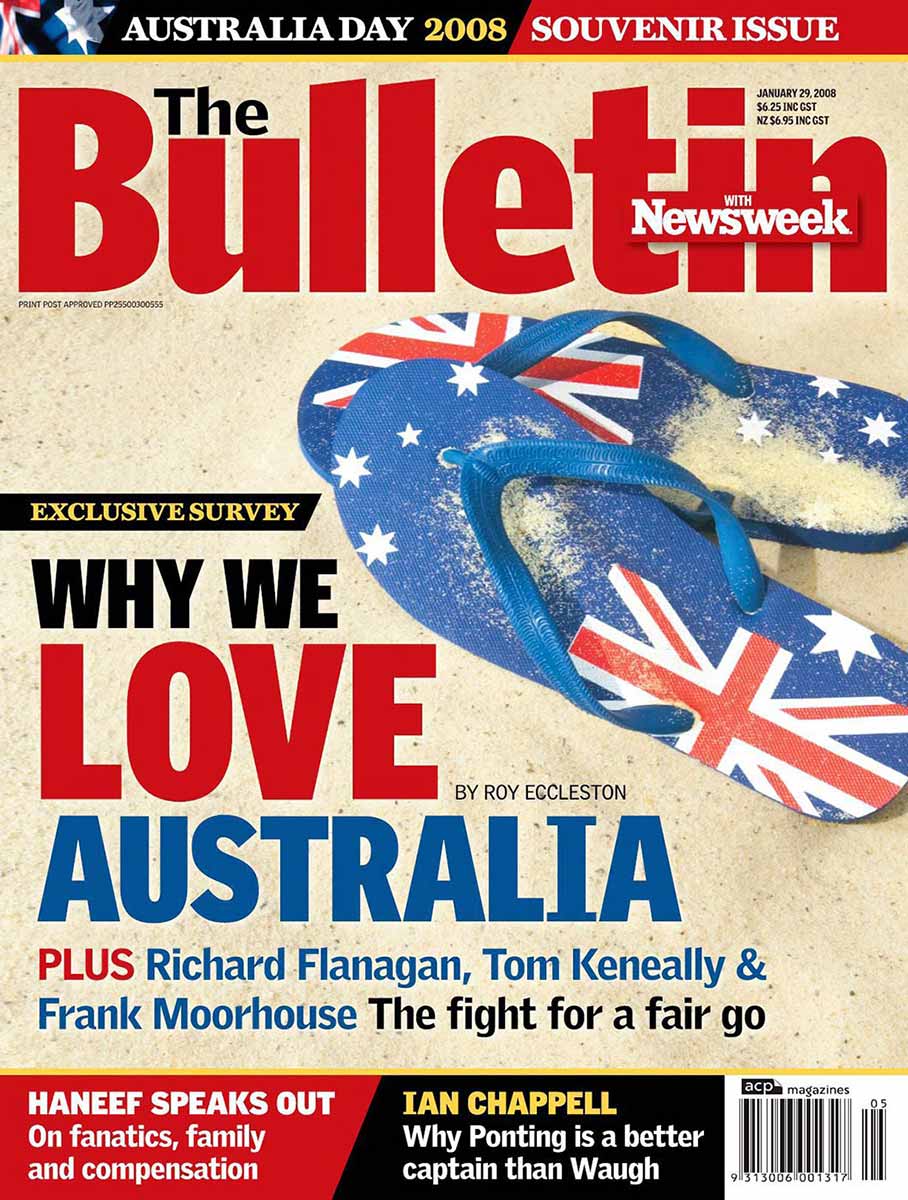With its first issue published in January 1880 and its last in 2008, the Bulletin remains one of Australia’s longest-running magazines.
In its early heyday, the weekly publication became known as the ‘bushman’s bible’, printing specifically Australian and often controversial material.
Many well-known Australian writers and artists contributed to the Bulletin, including Henry Lawson, Banjo Patterson, Miles Franklin and Norman Lindsay.
A revival in the early 1960s saw the magazine turn to more inclusive political and news-based journalism.
The Bulletin, 31 January 1880:
To-day we send broadcast throughout the colonies the first number of THE BULLETIN … The aim of the proprietors is to establish a journal which cannot be beaten – excellent in the illustrations which embellish its pages and unsurpassed in the vigor [sic], freshness and geniality of its literary contributions. To this end the services of the best men of the realms of pen and pencil in the colony have been secured and, fair support conceded, THE BULLETIN will assuredly become the very best and most interesting newspaper published in Australia.

JF Archibald and the ‘Bulletin school of literature’
JF Archibald and John Haynes established the Bulletin in January 1880.
In its early years the Bulletin operated under the masthead ‘Australia for the white man’ and was widely known for its controversial content.
The magazine included racist cartoons, sexist articles, criticisms of Britain and other foreign nations, attacks on conservative governments and, after 1886, increasingly Australian-focused material contributed by the public.
At its early peak the magazine had a circulation of about 80,000.
Under the guidance of JF Archibald, the Bulletin helped to establish the careers of many of Australia’s key literary and artistic figures.
It published stories and illustrations by Henry Lawson, Banjo Patterson, Miles Franklin, Breaker Morant and Norman Lindsay (among others), and was informally known as the ‘Bulletin school of literature’.
Archibald continued to be a patron of Australian arts during his lifetime, and left money in his will for the establishment of an annual prize for portraiture. The Archibald Portrait Prize was first awarded in 1921.
Described as the 'bushman’s bible’, the Bulletin also provided a platform for the development of uniquely Australian writing, such as the iconic bush ballad.
This early support of a distinctly Australian style helped to create a sense of national pride in opposition to the British focus of many papers of the time.
Norman Lindsay, in his book Bohemians of the Bulletin, said, ‘The Bulletin initiated an amazed discovery that Australia was ‘home’, and that was the anvil on which Archibald hammered out the rough substance of the national ego.’
After suffering a nervous breakdown in 1907, Archibald gave up control of the Bulletin and, under a string of new editors, the paper became increasingly conservative. This led to a considerable drop in circulation and a long period of unpopularity. By the 1940s the Bulletin was widely considered extreme and obsolete.
Revival
The Bulletin remained a marginal publication until the Packer media empire bought it in the early 1960s. The magazine’s ‘Australia for the white man’ masthead was abandoned and a new focus on important political and news stories saw a revival in its popularity.
Many well-known and respected journalists worked at the Bulletin and helped to refresh the reputation of the magazine, with circulation levels increasing to around 100,000 in the early 1990s.
However, the Bulletin simply could not keep up in a marketplace threatened by the boom in online news content. With its circulation rapidly dropping, the magazine was operating at a loss from the late 1990s and had to be supported by the profits of other Packer-owned publications.
Final issue
After the death of Kerry Packer in 2005, a majority share in the Packer media interests was sold to CVC Asia Pacific. Despite the prestige of printing Australia’s longest running publication, the continual financial losses of the Bulletin could no longer be ignored and CVC closed the magazine after the release of its January 2008 issue.
In production for 128 years, the Bulletin (despite its often colourful history) is considered a cornerstone in the development of Australian social and literary culture.
In our collection
Explore Defining Moments
You may also like
References
Behind the Lines online exhibitions of political cartoons
‘Leisure time, 1913’, transcript of lecture by Professor Jill Julius Matthews
The Bulletin, The Dictionary of Sydney
Ken Gelder and Rachael Weaver, The Colonial Journals and the Emergence of Australian Literary Culture, University of Western Australia Publishing, Crawley, 2014.
Norman Lindsay, Bohemians of the Bulletin, Angus and Robertson, Sydney, 1965.
Patricia Rolfe, The Journalistic Javelin 1880–1980: An Illustrated History of the Bulletin, Wildcat Press, Sydney, 1979.


